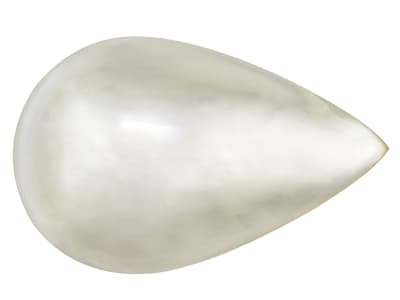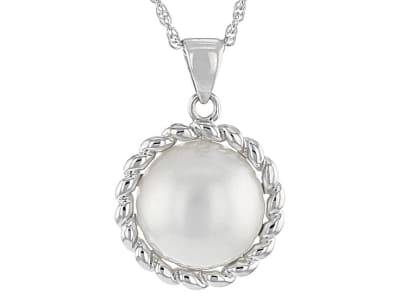The shell of the Pteria penguin, better known as the penguin's wing oyster, have a wing-like extension on one side of the shell is called “Mabé gai” in Japanese. The name “Mabé pearl” is inspired by this reference. The shells of the Pteria penguin and the Pinctada maxima are used to create blister pearls. The Haliotis variety of Abalone has also been used to create “Mabé pearls”. A plastic or wax half or three-quarter spherical or pear-shaped or heart-shaped nucleus is glued to the inside of shell. After two or three years of nacre growth the blister pearl is cut out of the shell. The nucleus is then removed and filled with resin and is backed with mother-of-pearl. The sizes range from 12mm to 25mm. They are more affordable than true cultured pearls.
General Information
LWUV: Variable
Mabe Pearl Colors
-
 Black
Black -
 Blue
Blue -
 Gray
Gray -
 Pink
Pink -
 Purple
Purple -
 White
White -
 Yellow
Yellow
Alternate Names
Blister Pearl
Countries of Origin
Unknown; Cook Islands; China; Japan; Philippines; United States of America; Mexico; Australia; Thailand; French Polynesia; India; Indonesia
History
The “Mabé Pearl Association” was established in 1969 and was made up of 16 different companies. By 1975 only one company remained. This company produces most of the blister pearls in the market. The company spent 20 years developing a breeding program for the Pteria penguin oyster. The company has their own mollusk hatchery and when the mollusks are 3 years old, they used for a pearl harvest. After the pearl harvest they are then used to grow “Mabé pearls”.
Care
Avoid cosmetics, perfumes, hairsprays, heat and household chemicals. “Mabé Pearls" are softer than true cultured pearls and care has to be taken not to damage them.


